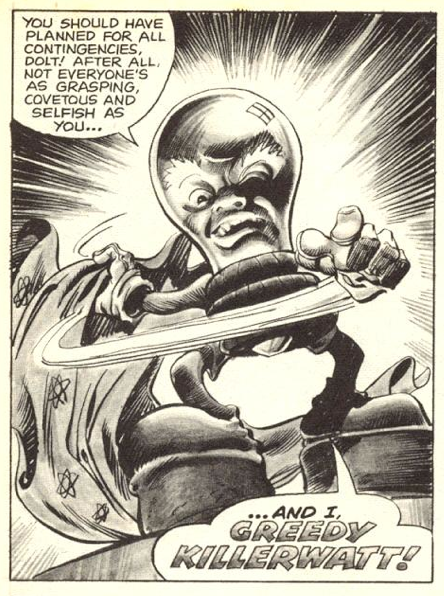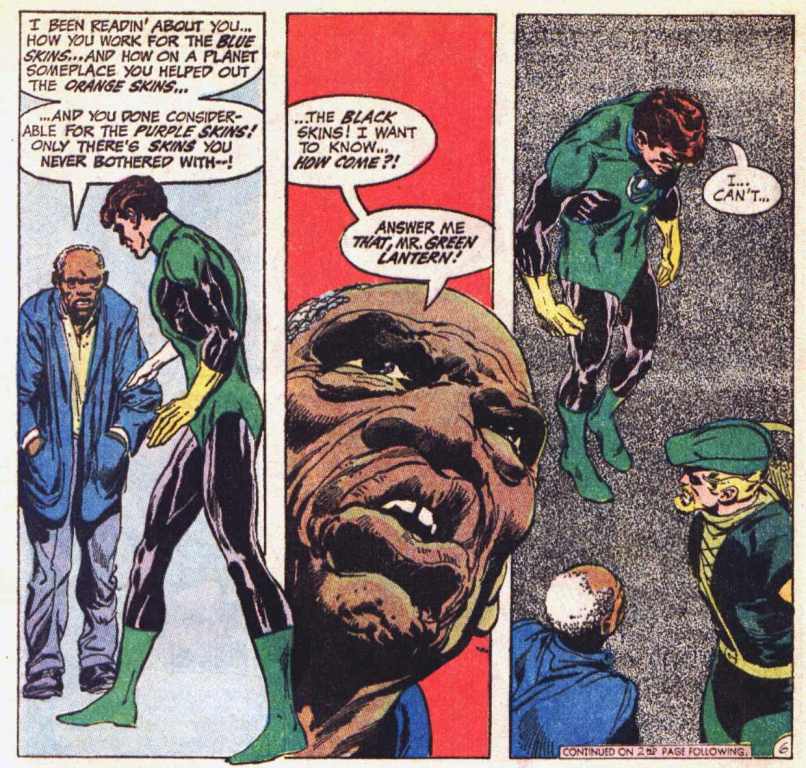While most obituaries for Stan Lee gave him credit for creating the core of the Marvel Universe, a did see a few that revived the charges that Jack Kirby and Steve Ditko did all the work and Lee stole the credit. This is more complicated than it appears so I'll look at it from different angles.
First, no one would even care if it wasn't for Stan. Prior to Marvel, comics were either unsigned or had the writer and artist's name in a small box on the splash page. Few people paid attention to the credits. And most comic publishers (including Marvel's predecessor, Timely) had a house style to make it difficult to tell who did the art.
Stan changed that. He put the producer's names in a big box. When that wasn't enough, he made up nicknames or rhyming couplets or on-line jokes to get people to read the credits. He also allowed the artists to develop their own style. If you look at the very first Marvel comics, it's hard to tell who drew them. Kirby's distinctive style hadn't started to develop yet. A few years later you could tell who the artist was without reading the credits because they all had unique styles.
Stan also gave credit to the inker and letterer (and later the colorist). This is an interesting point because a lot of artists have a poor opinion of the contribution of the inker. Just look at the difference between Silver Surfer #5 and #6 (original run) to see how much difference an inker can make.
So, we only care about who got credit because Stan got us to read the credits.
A big argument is that the artist did so much more. Ditko complained that the artist took a bare outline of a story, fleshed it out, then broke it down by page an panel to decide the flow of the story. Then he'd decide who to include and what to show in each panel. That took a lot of time. Kirby was a very fast artist. He could produce a comic a week. Ditko was slower and did his own inking. He only produced one comic book (Spider-Man) plus two half-comics (Doctor Strange and the Hulk) per month. Lee took a fraction of that time to add the word balloons - often spending mornings working on plots with an artist then doing the dialog in the afternoon. So the artists were spending 5-10 times the amount of time on a comic as Stan did. Was it fair for him to give himself top billing?
To counter that, I'll point out that the artist probably figured out the pacing, etc. in an afternoon so his contribution to the story was similar to Stan's. Yes, drawing all the characters takes time but a lot of that is just drafting. It fills in the panel but doesn't add to the story.
And let's keep in mind what Stan did. Marvel had 4-5 comics come out every week and Stan was writing nearly all of them. In addition to that, he edited the letter's page and supervised everything else. Where Kirby might do 40-50 stories in a year, Stan was doing hundreds. Yes, he delegated a lot of the work to the artists but his part in it was still staggering.
Oh, but according to Kirby, Stan wasn't actually writing those comics. Kirby was writing the dialog in the margins and Stan copied them into the word balloons. Kirby claimed that for years. Stan's response was that Kirby's dialog was clunky and dated and he ignored it. Kirby never went back and looked at the finished books so he didn't realize that his dialog never made it to the finished page.
Who's telling the truth? I suspect that Stan did use some of Jack's dialog but I believe him when he says that he wrote most of it. Look at the other comics Marvel published at the same time. Then look at the comics Ditko and Kirby did after they left Marvel. Stan was right - neither Kirby nor Ditko did dialog as well as Stan. He was much better at giving each character his own style of speaking and his dialog was a lot punchier. Both artists' dialog sounded like lines from old movies.
So, my final point, how important was Stan's contribution? He may have made some suggestions but Kirby designed most of the characters' costumes. (Note: both Kirby and Ditko claimed credit for creating Spider-Man. Ditko claims that Kirby's creation was too similar to The Fly so they tossed that and Ditko started fresh. Certainly the costume and powers are typical for Ditko and very unlike anything Kirby did.)
Here's the thing about the characters - they aren't all that original. The Fantastic Four was all retreads. None of the characters had original powers and they wore blue jump-suits with a 4 on the chest. The Hulk was sort of Frankenstein's Monster mashed up with the Wolfman (for his first couple of appearances Bruce Banner turned into the Hulk at night). Iron Man and Thor had basically the same powers as Superman, just not on a much lower level. Marvel didn't start having characters who were really original until the X-Men.
Speaking as someone who started reading Marvel comics in the Silver Age, what really hooked me was the plots and dialog. They acted completely different than characters at DC. You never saw members of the Justice League argue and they were all pretty interchangeable. Marvel heroes argues, they told jokes, they had romances. And that was Stan.
By 1970 both Ditko and Kirby had left Marvel and gone on to DC. They were allowed to do whatever they wanted and they wrote their comics as well as drawing them. And they flopped big-time. Ditko created Hawk and Dove about a pair of brothers who were given powers. They argued a lot. It wasn't very interesting. He also did The Creeper about a reporter who could transform into a spooky character with yellow skin, green hair and a red mane coming from his shoulders. It was better but didn't last long.
Kirby made a big splash with his "4th World". He let his creativity loose, creating warring worlds of super-beings. They were all cancelled within 18 months. He tried again a few times. None of his comics were a success. One he created with Captain America co-creator was cancelled after its first issue.
Meanwhile, Marvel kept on going. Sales continued to improve until they overtook DC and the stories continued to be good. But, a couple of years after Kirby left, Stan was promoted and had to stop writing. Talented writers replaced him but you could really tell the difference. Marvel began a decline in quality that lasted most of the 70s. There were bright spots here and there but, in general, the books just weren't as good without Stan.
So that's my conclusion. Marvel survived the loss of Kirby's and Ditko's art far better than the loss of Stan's writing and neither artist was able to repeat his success at DC. Stan was indeed responsible for the success of Marvel Comics and its characters. Kirby and Ditko played a big part of that but Lee wasn't stealing credit due to them.






